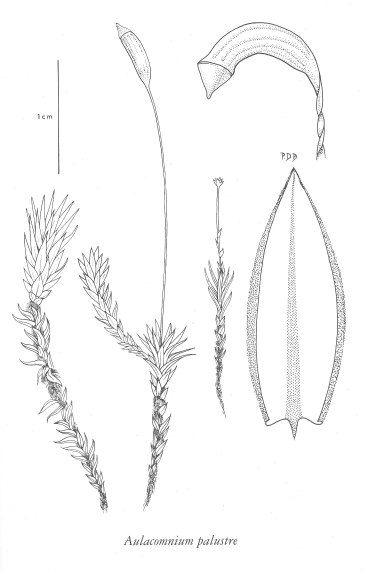E-Flora BC: Electronic Atlas of the Flora of British Columbia
Aulacomnium palustre (Hedw.) Schwaegr
glow moss (aulacomnium moss) Aulacomniaceae Species Account Author: Wilf Schofield Extracted from Some Common Mosses of British Columbia Introduction to the Bryophytes of BC
|
||||||||||||||
